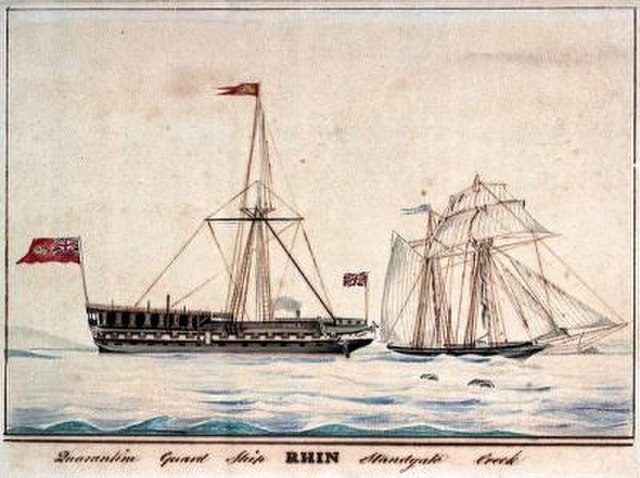Cordon sanitaire (medicine)
A cordon sanitaire is the restriction of movement of people into or out of a defined geographic area, such as a community, region, or country. The term originally denoted a barrier used to stop the spread of infectious diseases. The term is also often used metaphorically, in English, to refer to attempts to prevent the spread of an ideology deemed unwanted or dangerous, such as the containment policy adopted by George F. Kennan against the Soviet Union.
A loosely enforced cordon sanitaire during a cholera epidemic in Romania, 1911
A quarantine is a restriction on the movement of people, animals and goods which is intended to prevent the spread of disease or pests. It is often used in connection to disease and illness, preventing the movement of those who may have been exposed to a communicable disease, yet do not have a confirmed medical diagnosis. It is distinct from medical isolation, in which those confirmed to be infected with a communicable disease are isolated from the healthy population. Quarantine considerations are often one aspect of border control.
US President Richard Nixon greeting the Apollo 11 astronauts in NASA's mobile quarantine facility
The quarantine ship Rhin, at large in Sheerness. Source: National Maritime Museum of Greenwich, London
Isolating a village in Romania whose inhabitants believe that doctors poison those suspected of cholera (1911)
The quarantine hospital building (lazaretto) at the historic Columbia River Quarantine Station near Knappton, Washington




